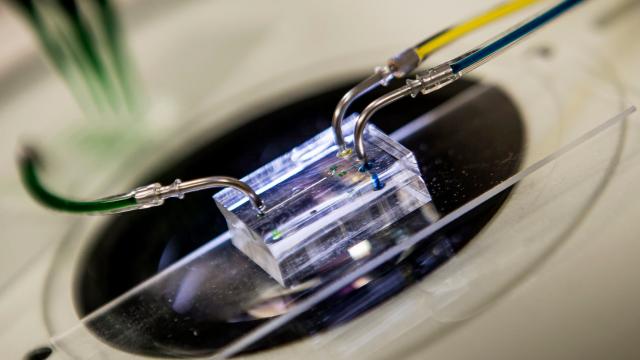This small, clear block may not look much, but it uses some of the world’s most basic physics to accurately recreate the rhythms of the human heart in the laboratory.
This certainly isn’t the first heart-on-a-chip to be created. But microfluidic devices like it have in the past required mechanical pumps or hand-driven syringes to recreate the kind of blood flow through the device that a human body creates. Instead, a team from the University of Michigan have turned to gravity to help recreate the biological phenomena of the heartbeat.
The chip uses a network of microscopic, gravity-driven channels, shown below, to acheive that. “One of our biggest challenges was building a gravity-driven microfluidic circuit that works reliably,” Sung-Jin Kim, one of the researchers, said to PhysOrg. “[M]icrofluidic switches need negative pressure to close properly. We eventually realised that we could control the pressure of the system by positioning the outflow well at a measured distance below the chip, creating just the right amount of pressure.”

By varying the inflow of fluid, the team can recreate a variety of pulse rates and pressures on a single chip. Even better, the chip — first designed using CAD — can be easily constructed from silicon rubber at a few cents a time. The team expect it to be used to help test new cardiac drugs in the future.
